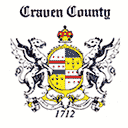Epicormic Buds on Crapemyrtle
go.ncsu.edu/readext?598998
en Español / em Português
El inglés es el idioma de control de esta página. En la medida en que haya algún conflicto entre la traducción al inglés y la traducción, el inglés prevalece.
Al hacer clic en el enlace de traducción se activa un servicio de traducción gratuito para convertir la página al español. Al igual que con cualquier traducción por Internet, la conversión no es sensible al contexto y puede que no traduzca el texto en su significado original. NC State Extension no garantiza la exactitud del texto traducido. Por favor, tenga en cuenta que algunas aplicaciones y/o servicios pueden no funcionar como se espera cuando se traducen.
Português
Inglês é o idioma de controle desta página. Na medida que haja algum conflito entre o texto original em Inglês e a tradução, o Inglês prevalece.
Ao clicar no link de tradução, um serviço gratuito de tradução será ativado para converter a página para o Português. Como em qualquer tradução pela internet, a conversão não é sensivel ao contexto e pode não ocorrer a tradução para o significado orginal. O serviço de Extensão da Carolina do Norte (NC State Extension) não garante a exatidão do texto traduzido. Por favor, observe que algumas funções ou serviços podem não funcionar como esperado após a tradução.
English
English is the controlling language of this page. To the extent there is any conflict between the English text and the translation, English controls.
Clicking on the translation link activates a free translation service to convert the page to Spanish. As with any Internet translation, the conversion is not context-sensitive and may not translate the text to its original meaning. NC State Extension does not guarantee the accuracy of the translated text. Please note that some applications and/or services may not function as expected when translated.
Collapse ▲Epicormic buds are dormant buds found along stems, and are normally not easy to see unless you’re looking at an exceptionally thin-barked plant such as a crapemyrtle. These buds can be activated to form epicormic branches, which are often noticed on trees that have been damaged by construction or other disturbance, or stressed by heavy topping. The latter response includes heavily pruned crapemyrtles.
To determine for myself if the bumps (far left in the photo) were epicormic buds, I made a topping cut along a crapemyrtle stem in the winter, and then waited to see how the tree would respond once the growing season was underway. Sure enough, by the third week of April it was clear that a number of these bumps were beginning to produce green color and even the beginnings of new shoots.
The relevance of epicormic growth to homeowners and landscape professionals is that epicormic attachments are not strong attachments. While it has been stated by some that topping makes crapemyrtles stronger and more wind resistant, just the opposite is the case.
Oftentimes in the spring, Extension agents field questions regarding thin crapemyrtle shoots that appear to have fallen off or been clipped off by insects. Invariably, the crapemyrtle in question was topped earlier in the season, and the resulting epicormic shoots are so weakly attached that they can actually be blown off in a strong breeze. As the epicormic shoots age, they aren’t likely to be blown off the tree, but at the same time they’ll never be as strongly attached as normally developed branches.
While this may not matter a great deal with crapemyrtles – other than the lost aesthetics and potential size of the plant – it’s a very big problem when it comes to large growing trees. A topped pecan tree, for example, will become increasingly unsound as the resulting epicormic branches become heavier and longer from year to year. Not only is the poor attachment a problem, but the large cuts associated with topping also cannot compartmentalize properly, and this brings stem decay into the picture.





